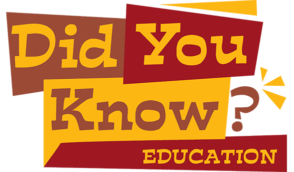by Graham McDonald
Whirr–whirr–whirr–whirr–whirr … the boomerang sang as it began to circle back through the air towards David’s hand. He caught it easily, then fingered the smooth acacia wood, deep in thought. What if …?
There were rumours coming out of America of two brothers who had made a flying machine. One with fixed wings. Surely one with rotating blades, one that whirled like a boomerang, was possible.
Just as Leonardo da Vinci had done four hundred years before him, David Unaipon dreamed of building a helicopter. Unfortunately, he was not able to raise the money to fund this project (or other inventions he had thought of), so the helicopter was never made.
David’s dad was James Unaipon and his mum’s name was Nymbulda. His dad had been brought up in a traditional Indigenous lifestyle and had undergone an initiation ceremony. He had lost the sight in one of his eyes during a savage fight against people from another area.
But James’ life had changed even more dramatically when he was 26 years old. He became a follower of Jesus, was baptised, and joined the Scottish Free Church. A missionary taught him how to read and write using the Bible. As the first Christian convert in his community, he was keen to share what he knew about Jesus with his people and together, he and the missionary who had taught him went out to visit Indigenous camps.
At the age of 31, James married Nymbulda. Their wedding was the mission’s first Christian wedding. David was their fourth child. He had eight brothers and sisters.
From an early age, David showed just how smart he was. He started mission school at seven and, just as his dad had done before him, he learned to read and write using the Bible as a textbook.
In 1909 he invented an improved hand tool for sheep shearing. If you look carefully at some older Australian fifty dollar notes, you’ll see his design. It’s in the middle, to the right of the drawing of his face.
He also invented a centrifugal motor, a multi-radial wheel and a mechanical propulsion device. And in 1914, long before the first helicopter soared into the sky, he got his idea for it from observing the way a boomerang flew through the air.
Even though David was unable to get enough financial backing to fully develop his ideas, he gained the reputation of being ‘Australia’s Leonardo’ because he was so interested in exploring and promoting scientific ideas.
David wrote poetry and authored a number of books. For fifty years he travelled around south-eastern Australia, writing, lecturing and preaching in churches and cathedrals. If you look closely again at a fifty dollar note, you’ll see a picture of a church that he attended. His Christian faith was important to him.
He eventually became a spokesperson to the government on many issues connected with the wellbeing of Indigenous people.
God blessed David with many gifts and talents. He continued to preach until he was 87 years old. In his sermons he challenged his listeners to consider what God can do for those willing to follow him. He would say, ‘Look at me and you will see what the Bible can do.’
David always acknowledged that God had transformed his life.
In the Preface to his book Legendary Tales of the Australian Aborigines, David wrote these encouraging words for those of Indigenous heritage to come after him:
As a full-blooded member of my race I think I may claim to be the first – but I hope, not the last – to produce an enduring record of our customs, beliefs and imaginings.
David is acknowledged to be the first Indigenous Australian writer to have a book published. His works reside in the State Library of New South Wales.
He is remembered as an Indigenous spokesperson and as an inventor but, most of all, as a man of faith in Jesus who lived a life devoted to him.
Source:
